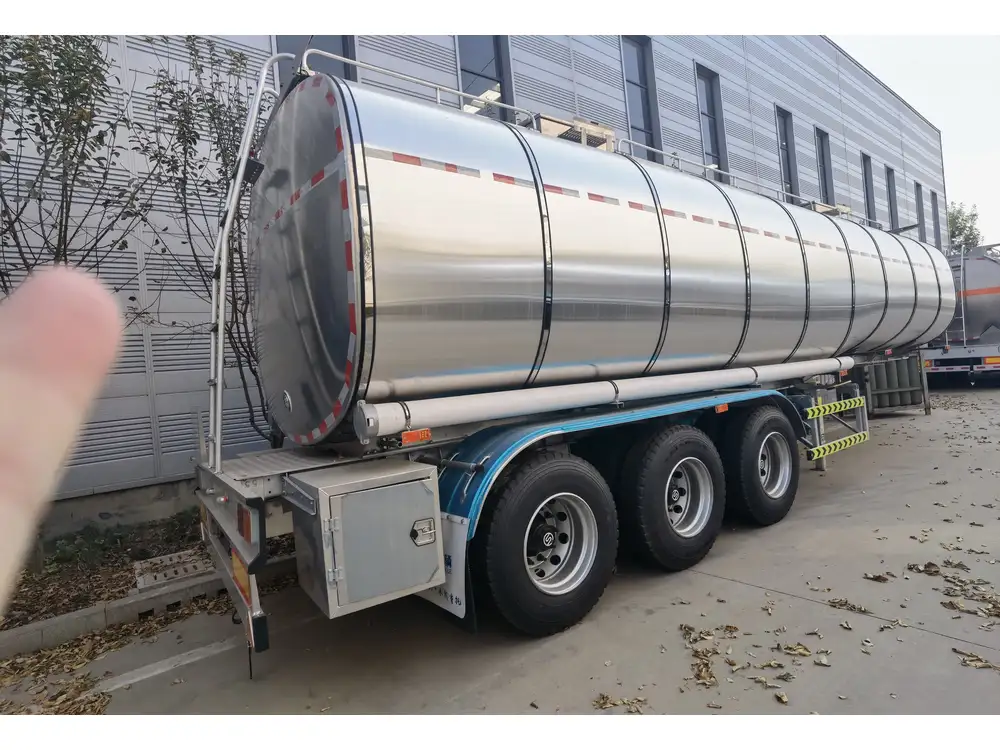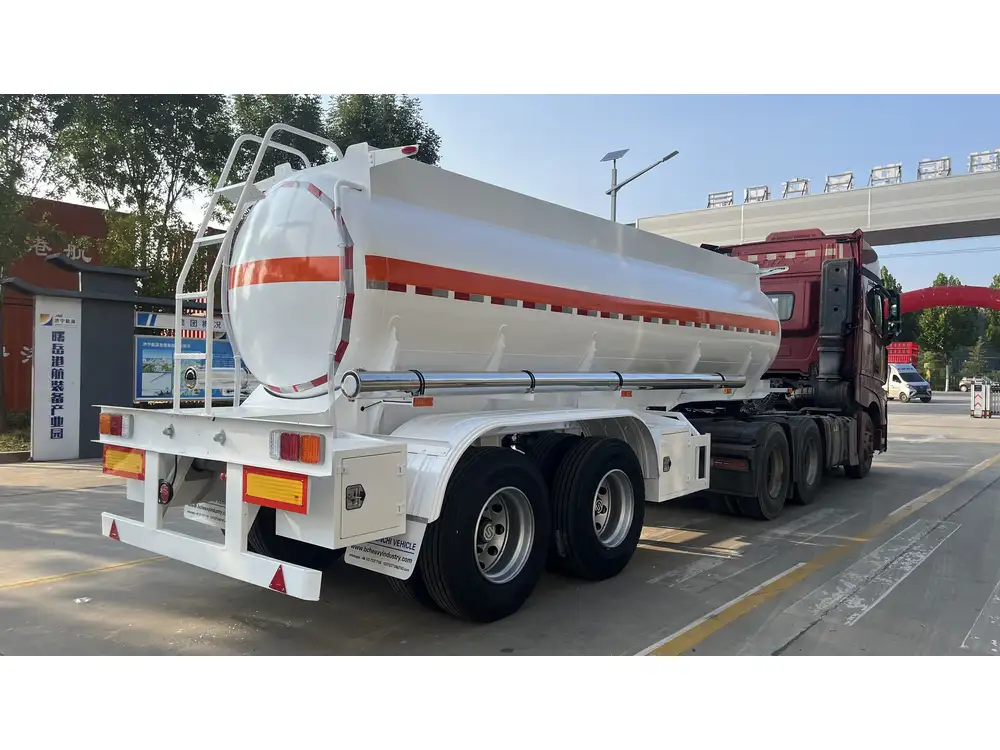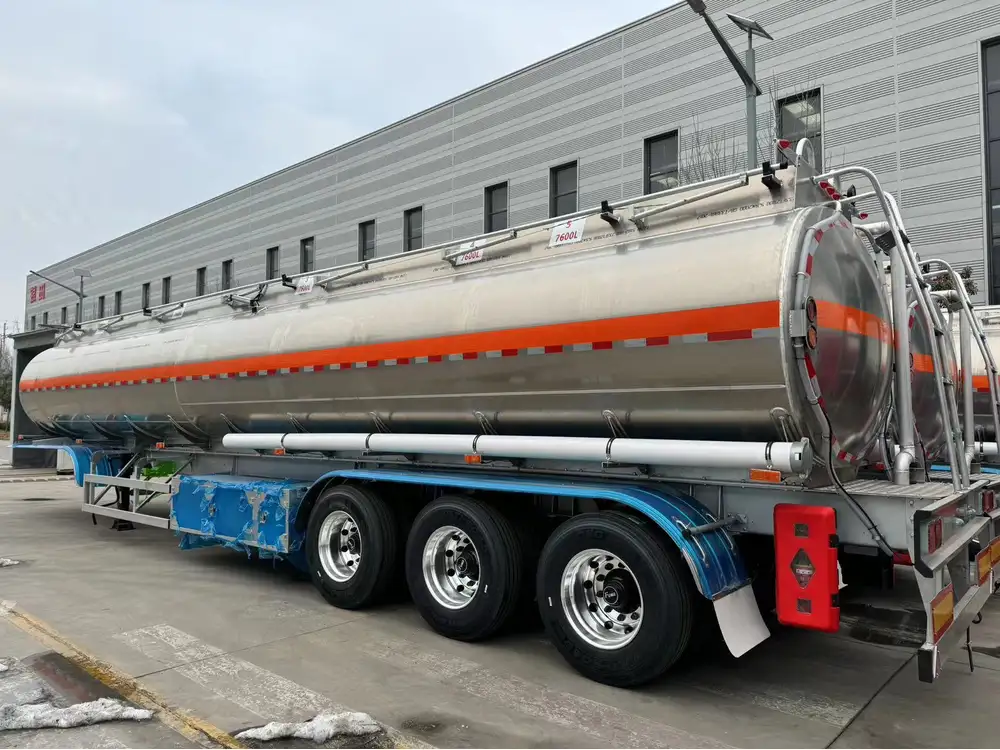When it comes to dump trailers, especially those designed for heavy-duty hauling, a distinctive feature catches the eye— the small extension at the rear. This seemingly simple addition is not just a design quirk. Instead, it serves multiple functional purposes that enhance usability, safety, and overall performance. In this article, we delve into the intricate details of why truckers commonly utilize this feature and its implications in various operational contexts.
Overview of Dump Trailers
Dump trailers are indispensable for transporting bulk materials, ranging from construction debris to agricultural products. They are favored due to their efficiency in loading and unloading, which can significantly reduce labor costs and time. However, to truly harness their potential, understanding each component’s function is essential.
Specifications of Dump Trailers
| Component | Description |
|---|---|
| Chassis | The foundational structure supporting the load. |
| Dump Bed | The container where materials are stored and dumped. |
| Hydraulic System | Facilitates lifting and lowering the dump bed. |
| Axles | Supports weight distribution and stability. |
| Extension | The small rear component that adds to load versatility. |

The Functionality of the Small Extension
1. Enhanced Material Dispersion
One of the primary reasons truckers opt for dump trailers with a small rear extension is the enhanced ability to control the dispersion of materials. When the dump bed tilts, the geometry created by the extension allows for better precision in unloading. Particularly in applications such as landscaping or soil distribution, this precision is invaluable. It minimizes spillage, ensures even coverage, and allows for dumping into confined spaces.
2. Increased Load Capacity
Interestingly enough, the small extension can contribute to an increase in load capacity under certain conditions. While it may seem counterintuitive, it provides additional support for bulkier loads, enabling a more balanced distribution of weight. This logical handling of mass ensures that the trailer’s integrity is maintained, reducing strain on both the axles and the coupling.

3. Multiple Dump Angles
Another crucial advantage stems from the extension’s design, permitting varied operational angles during dumping. This versatility allows truckers to adapt to different terrains and material types. For example, when unloading loose aggregates, a steeper angle correlates with faster discharge rates. The small extension aids in achieving these angles without compromising safety or vehicle stability.
Safety Considerations
4. Reduced Tip-Over Risk
In the world of heavy hauling, safety is paramount. The design of dump trailers, in conjunction with the small extension, minimizes the risk of tip-over incidents. When under load, the extension provides a moment arm that stabilizes the trailer during dumping operations, especially on uneven surfaces. This structural aspect warrants attention from truckers who regularly navigate tricky environments.

5. Enhanced Visibility
Visibility plays a critical role in safe unloading practices. The extension can sometimes elevate the rear of the trailer slightly, aiding in better sightlines for the operator or surrounding personnel. Improved visibility during the unloading process enhances situational awareness, especially in busy construction zones where multiple equipment pieces operate simultaneously.
Practical Applications of Dump Trailer Extensions
6. Construction Sites
In the construction industry, precision is essential. Dump trailers with a small extension excel in hauling materials to specific locations on-site where precision unloading is required. The ability to control the dump’s angle allows operators to disperse gravel, sand, or soil directly where it is needed, reducing material wastage.

7. Landscaping
For landscaping operations, efficiently transporting topsoil or mulch is vital. The extension allows for targeted, controlled unloading in tight spaces surrounded by delicate plants or structures. Landscape professionals can establish exact dumping spots, facilitating cleaner, more effective workflow.
8. Agricultural Use
In agriculture, dump trailers are utilized for transporting bulk feed, fertilizers, or even crop waste. The extension aids farmers when they require specific application techniques, improving efficiency during the harvest or planting seasons. For example, when spreading grain or feed, aiming for precise placements aids in preventing waste.
Maintenance Considerations

9. Assessing Wear and Tear
Like any vehicle component, the small extension on dump trailers can experience wear over time. Regular inspections should include a thorough check for any signs of stress fractures or corrosion. Addressing these issues early on can prevent larger problems, ensuring safety and prolonging the trailer’s lifespan.
10. Importance of Lubrication
The mechanism connecting the extension to the main trailer should regularly receive proper lubrication. This maintenance ensures smooth operation and reduces the likelihood of jamming or mechanical failure, which could compromise the trailer’s functionality during critical operations.
Comparative Analysis: Dump Trailers with and without Extensions
Understanding the differences between dump trailers with and without extensions can illuminate why many truckers prefer the former. Consider the following comparative table:
| Feature | With Extension | Without Extension |
|---|---|---|
| Load Precision | High | Moderate |
| Safety During Unloading | Enhanced | Standard |
| Control Over Angles | Flexible | Limited |
| Capacity Handling | Optimized | Fixed |
| Visibility | Improved | Compromised |

Frequently Asked Questions
11. How does the extension affect trailer stability?
The extension contributes to a more balanced load during dumping, reducing the chances of overturning, especially on uneven terrains.
12. Can the extension be modified or removed?
While technically possible, alterations should be approached with caution. Modifications may impact the trailer’s integrity and performance. Consulting with a professional is recommended before making any changes.

13. What materials are typically used for extensions?
Extensions are generally made from high-strength steel or aluminum, designed to withstand heavy-duty operations without succumbing to wear.
14. Are there regulations regarding dump trailer extensions?
While regulations may vary by region, it’s advisable for operators to consult local transportation authorities to ensure compliance and safety standards are met.
15. How can I maintain my dump trailer with an extension effectively?
Regular inspections, lubrication of moving parts, and prompt repairs of any wear or damage are essential steps to maintain your dump trailer’s performance.

Conclusion
In essence, the small extension found in many dump trailers is more than just a superficial feature; it plays a pivotal role in optimizing operational efficiency, enhancing safety, and expanding the trailer’s capabilities. By understanding its functions and applications, truckers can harness the full potential of their equipment, leading to enhanced productivity and reduced operational risks.
As the landscape of hauling solutions continues to evolve, considering elements like the small extension on dump trailers will undoubtedly pave the way for greater efficiency and innovative practices in the field. Whether you are engaged in heavy construction, landscaping, or agricultural transportation, the benefits of investing in a well-designed dump trailer with a specialized extension cannot be overstated.



